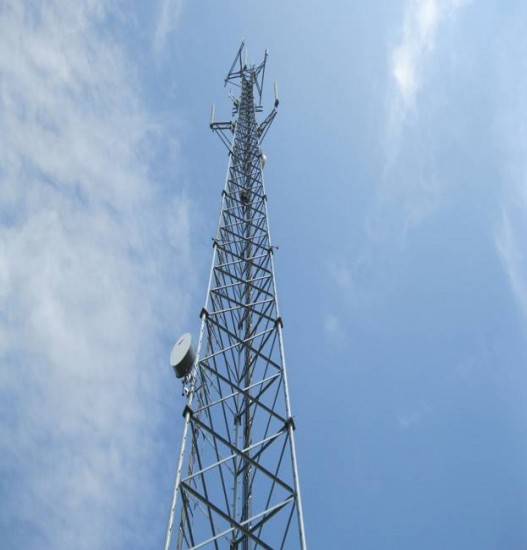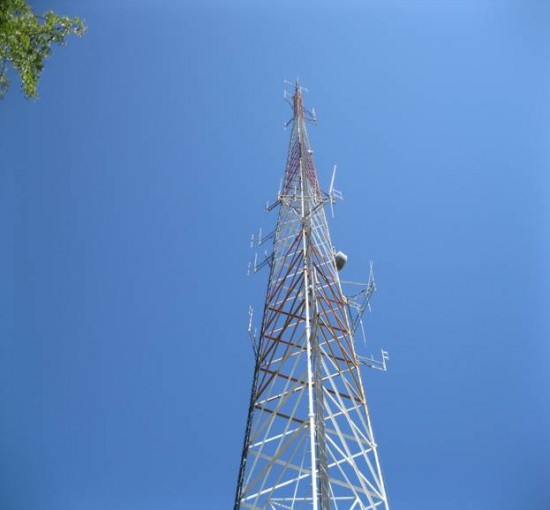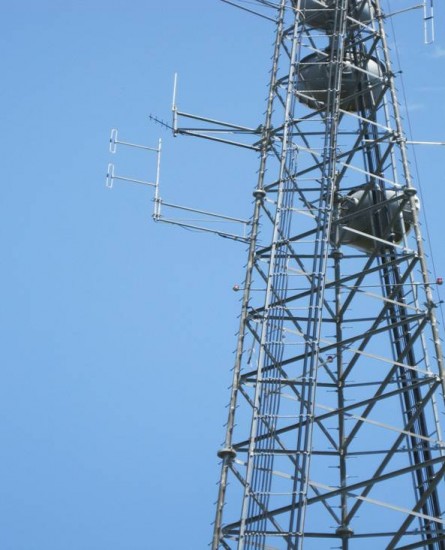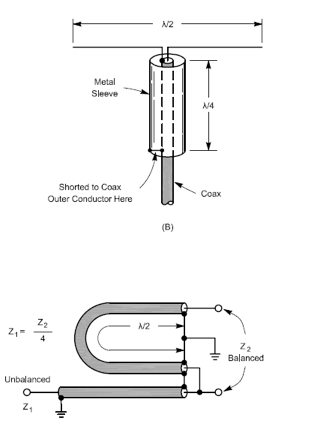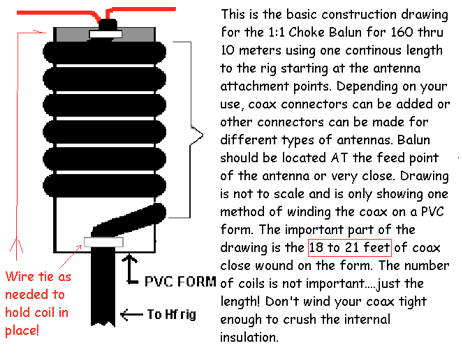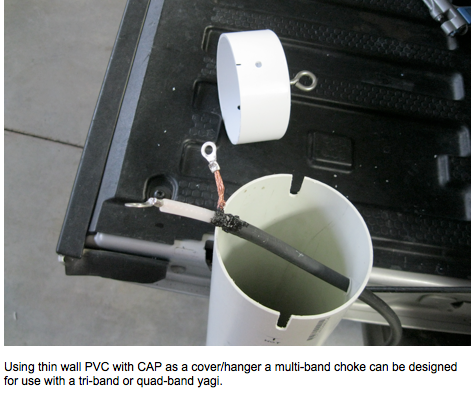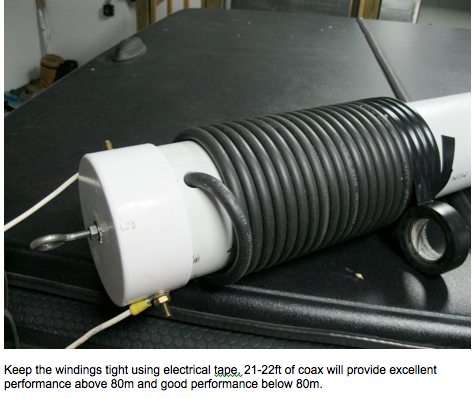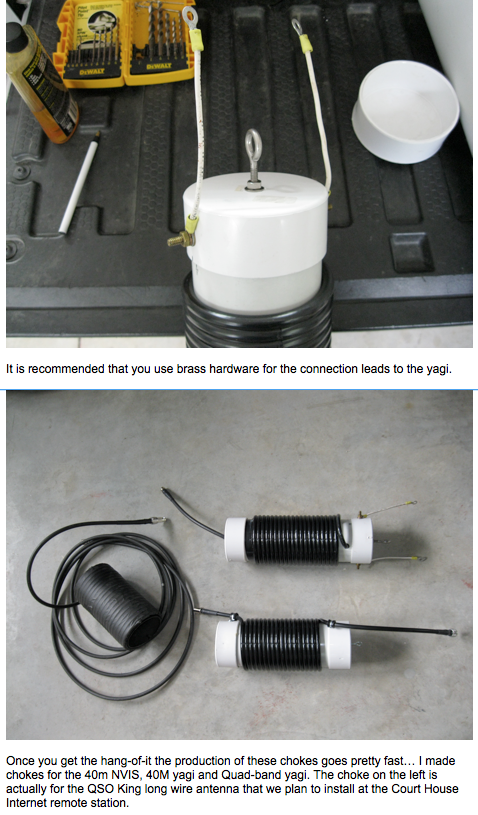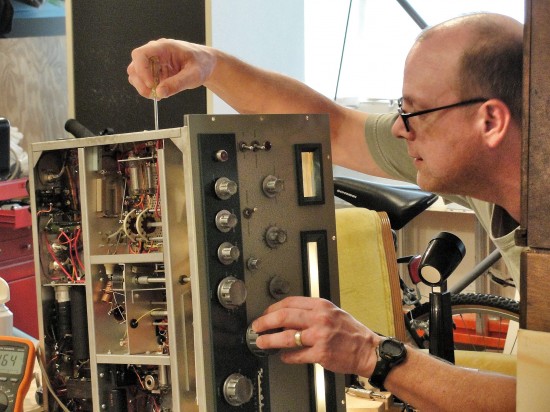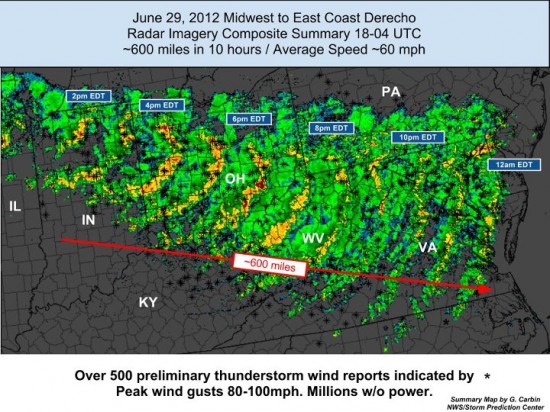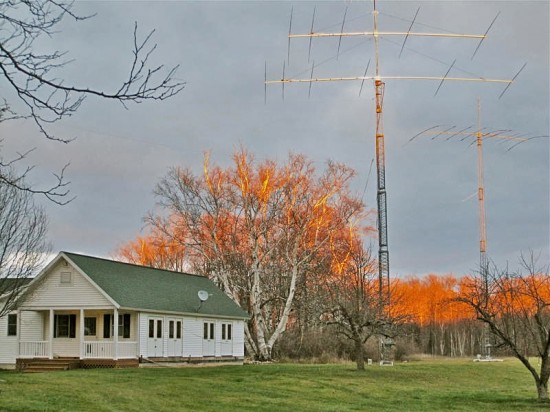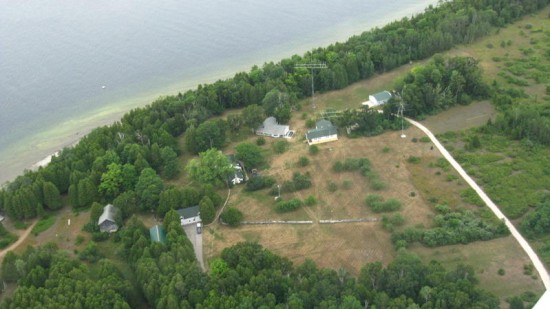Recent Articles
Amateur radio support for the 37th Marine Corps Marathon
By Gerry Greenwood, N3EVT
The 37th annual Marine Corps Marathon will be held on Sunday, October 28, 2012. Amateur radio has traditionally supported the foot race with radio operators positioned all along the 26 mile course and at key medical facilities staffed by Navy medical.
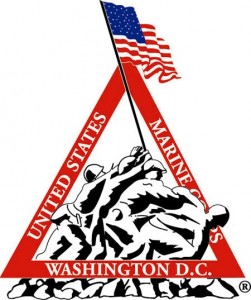 In addition those certified Arlington RACES personnel have supported Arlington Fire/EMS by being the link between these first responders and the radio operators on the course. If you wish to be a part of this major Washington event you need to apply through an on-line website (http://www.ncacdc.com/).
In addition those certified Arlington RACES personnel have supported Arlington Fire/EMS by being the link between these first responders and the radio operators on the course. If you wish to be a part of this major Washington event you need to apply through an on-line website (http://www.ncacdc.com/).
After you have signed up you will be verified and considered a “volunteer” for purposes of assignment. You are encouraged to participate in this worthwhile activity which benefits our community and provides us with a live exercise opportunity in message traffic handling. You can apply generally and receive an assignment commensurate with your background, training and equipment.
For those of you who are RACES certified you may indicate in the COMMENT box on the on-line form that you wish to be part of Arlington RACES/Arlington Fire/EMS. The hams who are heading up the MCM planning group have been working since at least June to pull together all the various aspects of the communications plan.
The net control station (NCS) will again be located on the grounds of the Armed Forces Retirement Home in Washington, DC. It’s a beautiful park-like elevated location in Washington and actually looks down on the U. S. Capitol dome. And its line of sight location to just about everywhere on the race course means NCS can get a signal out to the hams on the course, even SIMPLEX if necessary.
 But the fly in the oinment is that some operators, ignoring advice, report for duty with an HT and the rubber duck antenna that came with the radio. Frequently this just isn’t enough to insure reliable communications with NCS if you are trying to access a repeater in Rockville or Tysons Corner. So a word to the wise, generally – if you are going to be involved in emergency communications you need a plan that includes a gain antenna and a transmitter that has more than 5 watts. I think this is going to be stressed this year for the MCM.
But the fly in the oinment is that some operators, ignoring advice, report for duty with an HT and the rubber duck antenna that came with the radio. Frequently this just isn’t enough to insure reliable communications with NCS if you are trying to access a repeater in Rockville or Tysons Corner. So a word to the wise, generally – if you are going to be involved in emergency communications you need a plan that includes a gain antenna and a transmitter that has more than 5 watts. I think this is going to be stressed this year for the MCM.
In the latest planning meeting there was an interesting discussion on when the event ended. Did it end when the last runner crossed the finish line?
Or since the MCM now officially includes a post-race street festival with medical facilities does emergency communications support end when the Navy closes the last of those facilities. Stay tuned. The race course has been slightly altered from last year in that the runners proceed around a different side of the Pentagon. This entails shifting some mile markers 100’ or more. So if you were on the course last year and can visualize where a particular mile marker was, you will have to update your mental image.
This year’s All Hands meeting will be October 20th in Rockville, MD where the most current information will be shared, handouts distributed and questions answered. Hope to see you for the race.
>>> Amateur Radio Operators … volunteer to help coordinate the Marathon. Click here. <<<
W4AVA’s remote receiver system
By Dave Jordan, WA3GIN
The typical remote receiver system is comprised to two Kenwood Land Mobile Radio transceivers; one UHF transceiver for the return transmit audio LINK and one VHF transceiver listening on the repeater input frequency, with dedicated DC power supply, UPS and generator.
The receive audio from the VHF radio is matched and fed into the UHF radios microphone audio board for transmission back to the repeater voting system which selected the site who has provided the best audio signal to noise ratio; that audio signal is then passed to the main repeater transmitter and that is what is heard on our radios.
At any point during a transmission one or all of the remote receivers may hear a transmission, typically for stations close-in to the primary coverage area the repeater receiver and two to three other remote receivers may compete for voter preference.
For mobiles, as you are in motion the voter may switch inputs from one remote to another based on the quality of the signal presented to the voter. The system works pretty well and the switching is barely noticeable.
Note: There is a forth remote receiver at the Arlington Court House with antennas at >400 ft ASL and a fifth remote receiver site in Hay Market, VA. The 5th site is located on private property so we’re not disclosing the location or provide pictures. The antenna height at this location is > 1000ft ASL. (Currently under construction).
Open Air Choke Balun
By Dave Jordan, WA3GIN
We hear a lot and see many articles about using balun technology to reduce RFI, provide better matching to balanced antennas like ½ wave dipoles or to reduce feed-line interaction with yagi and vertical antennas. There are naming conventions for baluns as well, such as voltage, current and open air choke baluns. This article is a do-it-yourself construction brief for the open-air type balun. For more details about baluns go here: http://vk1od.net/balun/concept/VoltageCurrent.htm
Above are two baluns from the ARRL Handbook, neither uses a magnetic core. The second also performs 4:1 impedance transformation. Classify each as a Voltage Balun, Current Balun, or neither.
Enter the open-air choke balun from N4UJW:
Introduction …
A balun’s purpose is to allow connecting a balanced, (e.g., a dipole or driven element) to an unbalanced line such as coax which is not balanced, thus the name, Balun. The 1:1 choke “balun” is not actually a balun. It’s function is to help eliminate rf currents from flowing on the outside of coaxial cable using the principle of choke action. Another “name” for it is the air choke.
In transmitting antennas, this is accomplished by presenting a high impedance (resistance), to RF currents flowing outside the coax shield. This forces currents in each side of a driven elements to be equal. This is especially important in beam antennas because it prevents distortion of the beam’s pattern caused by unequal currents in the driver(s). In a simple dipole, the balun (choke), assures that the dipole, and not the feed line, is doing the radiating!
When you connect center fed antennas, like dipoles, V’s, triangles, yagis, rhombics, loops and so on, to coaxial cable, unless care is taken, it is not difficult to end up with feeder radiation. Not only can the loss in power be quite significant, but the radiation characteristics of the antenna system will also be seriously compromised.
In laymen’s terms, it won’t be what you are expecting from the pattern of your antenna.
As the feedline becomes part of the antenna, currents can flow from the line into the mains and on TV cables, metal masts and yagi booms, causing a variety of EMI problems that can be very difficult to trace. Frequently these problems are simply due to unbalance – and the solution is the humble air choke.
If an antenna system is fed at center with a parallel conductor line (provided that correct installation procedures are followed) balance will be maintained, USING A BALUN, with currents in equal and opposite phase canceling each other out.
When the connection is to a coaxial cable, WITHOUT A BALUN, this cannot occur because currents flowing inside the cable from the connection to the inner conductor are separated from those flowing on the outside from the connection to the shield, and the result is unbalance causing feeder radiation. However, if the two electrical circuit elements (antenna and coaxial cable) are coupled using a balan, balance will be maintained.
Enter … The Ugly Balun!
Preparedness for Extreme Weather
By Gerald Greenwood
Only WUSA-TV (channel) broke into regular programming Friday night, June 29, to tell us that a strong storm was approaching. Meteorologist Topper Shutt was tracking it and had visuals on the screen telling viewers when it would hit various communities in its path.
He was stressing the importance of taking action now. What did I do? I took the patio umbrella down and went back inside to watch an international mystery. About 20 minutes later I heard the sound of a freight train coming down the line. Except we don’t live near any tracks.
The wind velocity was impressive moving very large tree branches from side to side. As a recreational sailor I have experienced 50 mph winds which were life-threatening. This was more extreme.
And thankfully I wasn’t bobbing in the ocean this time. Usually the stronger the winds the more quickly they pass. This seemed to last too long. And then the lights went out. I keep an LED lantern by the bed, so I turned it on. Then we waited for the power to come back on. It didn’t. Finally my wife asked, “Don’t you have a windup radio?” Indeed I did.
Going into the very back of the closet I found it and wound it up. My Freeplay radio informed us that the storm damage was wide spread. My HTs were charged and I did have sufficient AA cells that I could use, but I had no way to recharge my Ni-MH batteries except in the car. My phone was charged. I thought I was prepared, but I ignored one obvious component.
My car had about a 1/4 tank of gas and I knew without power a gas station couldn’t pump gas. We “camped” the next 3 1/2 days. Two weeks prior I had purchased a 9” Ryobi portable 18 volt fan with two batteries. For picnics. It was a game changer at night. This wind event was as close as you can come to a real unanticipated emergency.
We all know the dates for Field Day and the Marine Corps Marathon and we can gear up for those events, have everything by the door, at the ready. But when there is a bolt out of the blue are we ready? I encourage each of you to ask yourself that question and act accordingly. I for one now always have a full tank of gas!
A Visit to the Real Life Candy Store
By Don Smith, KI4FON
In July I had the good fortune to spend several days with W9EVT on Washington Island, WI. If you do not know George he has a collection of some 1100 plus radios civilian and military types the majority of them in working order. I copped his photo from his QRZ page and yes I sat in that same chair. I also had the opportunity to have a QSO with Dave WA3GIN with George participating in the QSO. What a hoot!
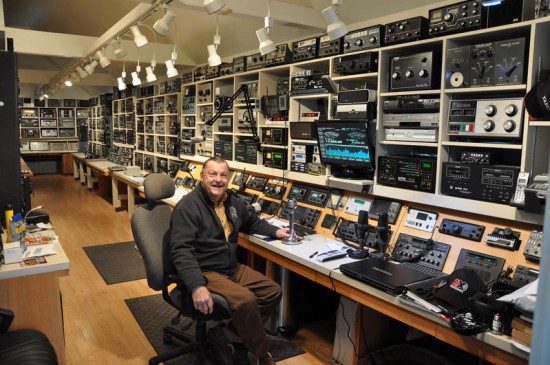
George Ulm, W9EVT, sits among his collection of 1,100 or so radios at his Washington Island, WI, ham shack.
In addition to working Dave I worked several other stations as well. George is well known on the bands. Everyone I worked using KI4FON/9 Washington Island knew I was using George’s station. With a full KW of power there are not many places that George cannot get into. The antenna farm helps tremendously. The farm consists of three towers at 100 feet each as well as several wire antennas and a vertical.
While operating I was using an IC 7800 pushing an ALPHA top of the line amplifier. The rotors utilize a digital control box, gotta have one of those for the shack in Alexandria. George also has a Flex 5000 but it was not in line when I was there. He had to send it back because the finals were weak and he had not unpacked the radio.
George and I had some long conversations about amateur radio and radios in particular. He showed me several of his prize radios all very easily identified. There was one that had him stomped. It was a Collins military radio in a rack, in fact he two of them. The one that stumped had a plate on its face the said “NASA WALLOPS”. He understood the NASA part but could not figure out the WALLOPS meant. As a good ole Virginia boy I was able to solve his mystery. Of course the radio had been at the Wallops Island facility on the banks of Virginia’s eastern shore. It sure is fun solving a mystery for someone like George.
Just a couple of footnotes about my trip to Washington Island, WI. Two years ago my wife and I traveled to Door County, WI. to attend the celebration of the wedding anniversary of some close friends. Through some messages posted on QRZ I was aware of who George was and knew we were not far away. I arranged a trip to visit George and also took my wife to a nationally known fiber arts studio that just happens to be a mile away from George’s QTH. My wife decided she had to take one of the classes the studio offered. Apparently the class she wanted fills up fast, hence the two year wait. What a deal she went to class and I got to play with George’s radios.
If you look closely at George’s QRZ page he lives on Green Gate Farm and yes there is in fact a green gate. On the property are four cottages available for rent. One of the cottages is in the ham shack and is called The Shack. I was present when Susan, George’s XYL was showing a potential around. They did not understand why she called it a shack, so I offered an explanation. This is not intended to be a sales pitch but if your XYL is into fiber arts it could mean an opportunity for you to play with George’s radios.

